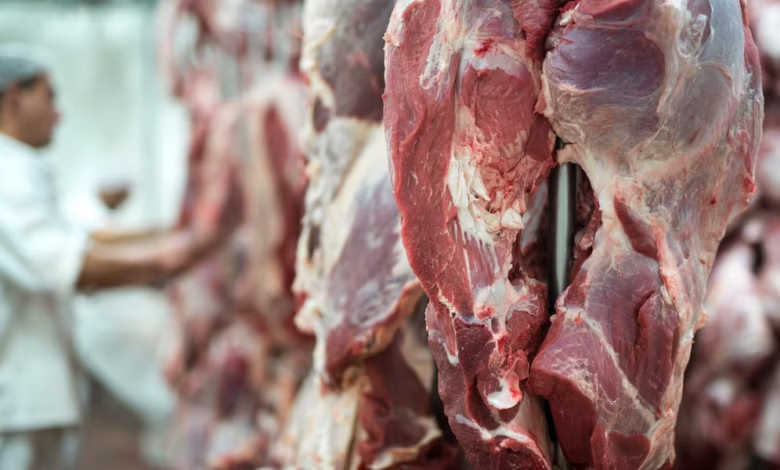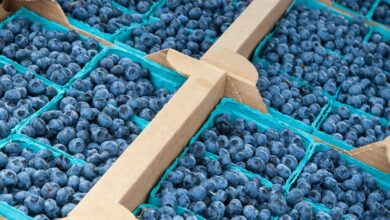Zimbabwe’s Beef Production Rises to 94,600 Tonnes in 2024 Amid Drought Pressures

Zimbabwe recorded a significant rise in beef production in 2024, with output reaching 94,623 tonnes, a 5.1 percent increase from 2023’s 90,000 tonnes, according to the Ministry of Lands, Agriculture, Fisheries, Water and Rural Development’s second round Crops, Livestock and Fisheries Assessment (CLAFA-2) report for the 2024/2025 summer season.
The increase reflects the resilience of the national herd despite a challenging drought season, as well as intensified destocking efforts by communal farmers responding to pasture shortages.
Slaughter Numbers Up Amid Emergency Sales
Data from abattoirs shows that 393,769 cattle were slaughtered in registered commercial facilities in 2024, up from approximately 360,000 in 2023. When informal slaughters at ward level are included, total offtake climbed to 531,588 head—an increase from 495,974 the previous year.
All categories of cattle recorded an uptick in slaughter numbers, with steers and oxen up 4 percent, bulls by 3 percent, and the most substantial growth seen in female slaughter. Heifers and cows jumped by 17 percent, from about 105,000 head in 2023 to 123,000 in 2024.
This spike in female offtake was largely driven by Government advisories encouraging farmers to destock early in anticipation of pasture shortages.
“We had no choice,” said Lydia Chikomo, a communal farmer in Marondera. “The advisory to destock saved many of us from losing everything.”
Tendai Moyo, a livestock extension officer in Mudzi, echoed this sentiment: “The only viable market when pastures dried up was the abattoir. This led to increased offtake, often before cattle reached their full condition.”
National Herd Growth Continues
Despite the rise in slaughter numbers, Zimbabwe’s national cattle herd continued to expand, reaching 5.74 million head in 2024—up from 5.71 million in 2023 and 5.64 million in 2022. The steady growth is credited to favourable rainfall during the 2022/2023 season, which improved crop yields and provided sufficient feed for cattle.
“With more maize and sorghum residues available, many small-scale and communal farmers could feed their cattle through the dry months,” said Dr Grace Ncube, an agricultural economist at the University of Zimbabwe.
Communal areas remain dominant in cattle ownership, holding over 64 percent of the national herd, with Masvingo and Midlands leading the provinces. The breeding herd—bulls, cows and heifers—now makes up 63 percent (3.6 million head) of the total cattle population, signalling potential for future herd expansion.
Challenges Hindering Productivity
Despite the positive figures, several structural challenges persist. The CLAFA-2 report highlights a calving rate of just 34.6 percent, down from 42 percent in 2023, and a high calf mortality rate of 18 percent. These issues are linked to poor herd fertility, the use of breeding females for draught power, and uncontrolled mating.
In fact, 53 percent of cows and heifers are still being used for draught purposes, significantly affecting their reproductive performance. Additionally, the current bulling ratio stands at one bull per 12 cows, compared to the optimal one per 20–25.
Grazing availability remains uneven across the country. While some districts have up to ten months of sufficient pasture thanks to recent rains, others—including Tsholotsho, Beitbridge, Chikomba, Mutoko and Hwange—face severe shortages lasting up to nine months annually. These shortages are expected to fuel further distress sales that could undermine long-term productivity.
Communal Dominance and Market Potential
The beef sector in Zimbabwe remains heavily reliant on communal production, which is vulnerable to climatic shocks and resource limitations. Only 1 percent of cattle are on large-scale commercial farms. The rest are distributed across A1 and A2 resettlement farms, small-scale commercial operations, and old resettlement schemes.
Oxen still account for 40 percent of all draught power, followed by cows and heifers at 53 percent, and bulls at 7 percent.
Given that per capita beef consumption stands at just six kilograms per year, the country has potential to increase exports—especially to SADC markets that favour lean beef. However, unlocking this potential will require addressing cold chain infrastructure gaps, improving abattoir hygiene and enhancing traceability.
Government Recommendations for Sustainable Growth
To close the beef offtake gap—currently at 10.5 percent versus the national target of 15–20 percent—the Government is recommending a suite of interventions. These include:
- Improved breeding and herd management
- Bull fertility testing and community bull schemes
- Enhanced veterinary services to cut calf mortality
- Feed supplementation in drought-affected areas
- Better timing and coordination of destocking
- Improved market access and farmer record-keeping
“The challenge now is to convert this temporary surge into sustainable growth,” said Dr Ncube. “If Zimbabwe can seize these opportunities, its beef industry could become a cornerstone of rural development and a major source of foreign exchange.”
Zimbabwe’s beef sector is at a turning point. While the 2024 figures demonstrate resilience in the face of climatic adversity, long-term sustainability will depend on strategic investments in animal health, farmer education, infrastructure, and market systems. With the right support, the country’s communal farmers could transform short-term gains into lasting prosperity.




